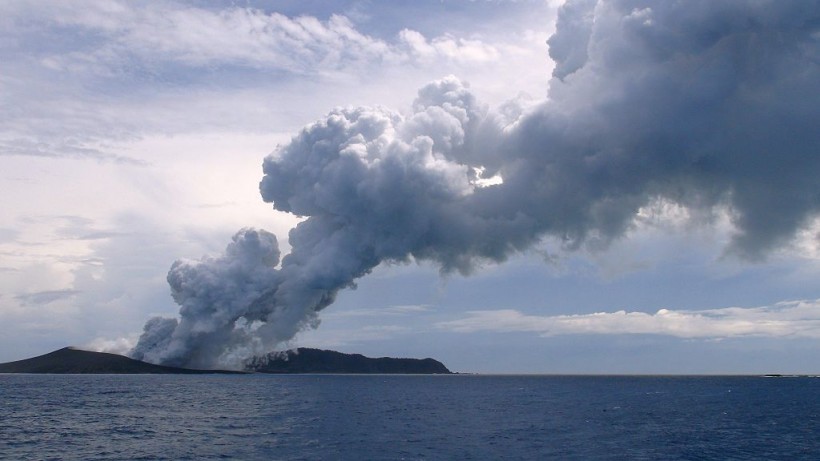The volcanic eruption in Tonga in January 2022 was one of the largest explosions in modern history.
It sent a massive plume of ash and gas into the atmosphere, creating spectacular lightning and shock waves that were felt around the world.
But the eruption also had another, less visible impact: it created a form of space weather that disturbed the ionosphere, the layer of Earth's atmosphere that reflects radio waves.
What is the ionosphere and why does it matter?
 (Photo : Mary Lyn Fonua/AFP via Getty Images)
(Photo : Mary Lyn Fonua/AFP via Getty Images)

The ionosphere is a region of the upper atmosphere, between about 60 and 1000 kilometers above the surface, where solar radiation ionizes the air molecules, creating a plasma of free electrons and ions, as per Phys.org.
The ionosphere plays an important role in radio communication, as it can reflect or refract radio waves depending on their frequency and angle of incidence.
One of the most common applications of radio communication that relies on the ionosphere is GPS (global positioning system).
GPS receivers use radio signals from satellites orbiting Earth to calculate their position and time.
However, these signals are affected by the ionosphere, which introduces errors and delays in their propagation.
To correct these errors, GPS receivers use models of the ionosphere based on measurements from ground stations and satellites.
However, when the ionosphere becomes disturbed by events such as geomagnetic storms or volcanic eruptions, these models become inaccurate and GPS receivers lose their precision.
This can have serious consequences for applications that require high accuracy, such as aviation, navigation, surveying, mining, agriculture, and construction.
Also Read: Volcanic Twilight "Afterglow": How Tonga's Eruption Left Antarctica in Magnificent Light
How did the Tonga eruption affect the ionosphere?
The Tonga eruption was so powerful that it created waves in the ionosphere that circled the planet four times, affecting GPS in various parts of the world for days, as per abc News.
It also produced a massive bubble of plasma that was detected above Southeast Asia and was carried by Earth's magnetic field to the north and south.
This bubble, also known as a plasma depletion or an ionospheric hole, is a region where the electron density is much lower than normal.
This causes radio waves to bend or diffract more than usual, creating errors and scintillations (rapid fluctuations) in GPS signals.
According to a new study published in the journal Space Weather2, this bubble was one of the largest and longest-lasting ever observed.
It covered an area of about 10 million square kilometers (roughly twice the size of Australia) and lasted for more than six hours.
It disrupted precise GPS positioning over northern Australia for several hours, causing errors of up to 50 centimeters.
The study also found that this bubble was very rare: only one similar event has been recorded in the past 20 years.
The researchers used data from multiple sources, including ground-based GPS receivers, satellites, and radars, to track and analyze the bubble's formation and evolution.
What can we learn from this event?
The Tonga eruption showed us how a natural disaster on Earth can create space weather that affects our technology.
It also highlighted the need for better monitoring and modeling of the ionosphere, especially in regions where data is scarce or unreliable.
With technology increasingly embedded in our everyday lives, it is becoming more important to understand space weather and its impacts on tech.
By studying events like this one, we can improve our knowledge of the ionosphere and its dynamics, and develop more robust and resilient systems for communication and navigation.
Related article: Tonga Volcanic Eruption Temporarily Increases Global Temperature Over 1.5 Degrees Celsius
© 2024 NatureWorldNews.com All rights reserved. Do not reproduce without permission.

![Tsunami Hazard Zones: New US Map Shows Places at Risk of Flooding and Tsunamis Amid Rising Sea Levels [NOAA]](https://1471793142.rsc.cdn77.org/data/thumbs/full/70325/280/157/50/40/tsunami-hazard-zones-new-us-map-shows-places-at-risk-of-flooding-and-tsunamis-amid-rising-sea-levels-noaa.jpg)



